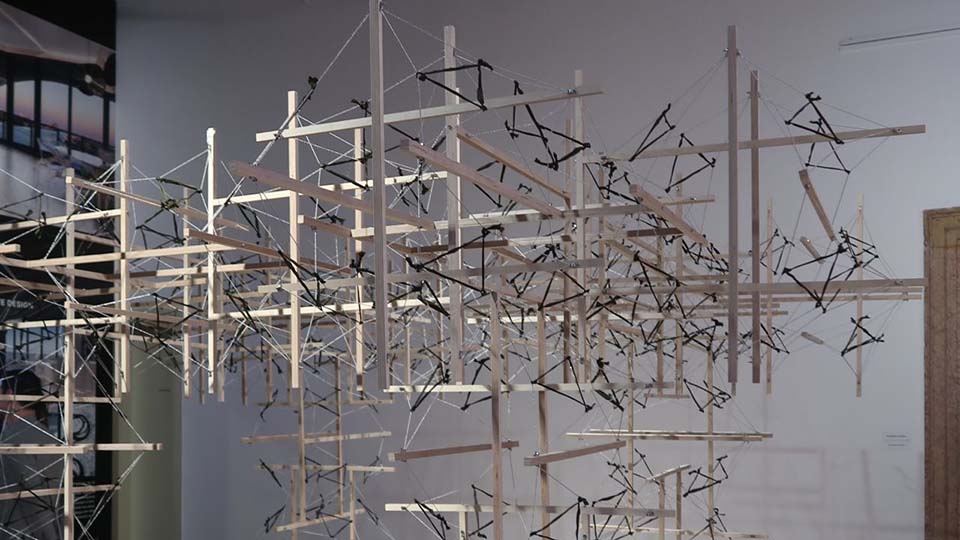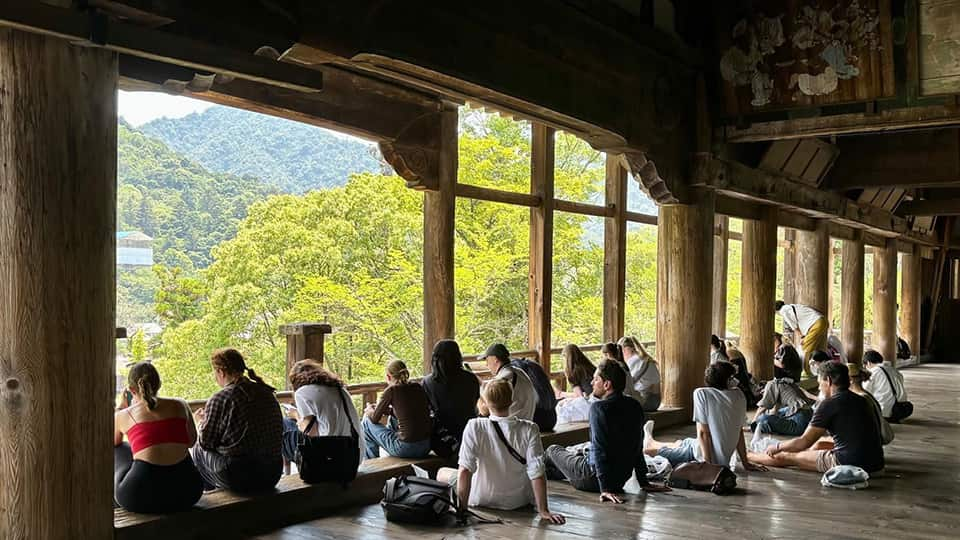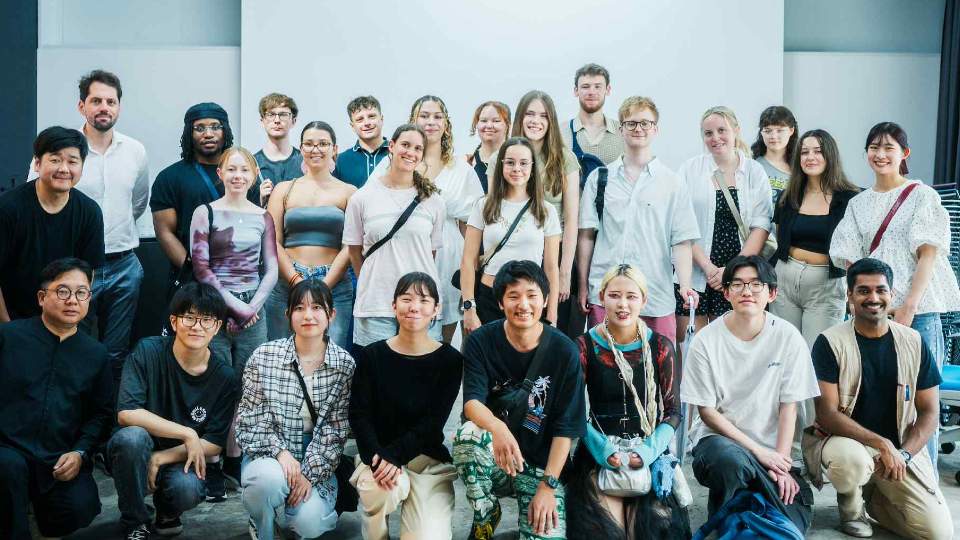Both trips wouldn’t have been made possible without philanthropic funding from alumnus Barry Eccleston and his wife Valerie Eccleston.
The students’ journey began in Venice, where they exhibited their pavilion ‘Strands of Venice – A Pathway to the Future’ at the ECC as part of the ‘Time, Space, Existence' exhibition in conjunction with the Biennale di Venezia, developed during the TEA Summer School at Loughborough University, a collaboration between institutions including Loughborough University, Manchester School of Architecture, and several leading Japanese and Italian universities.
 ‘Strands of Venice – A Pathway to the Future’
‘Strands of Venice – A Pathway to the Future’
Their pavilion addressed the ecological threat of invasive seaweed in Venice, using seaweed as a sustainable tensile material. Drawing inspiration from Japanese aesthetics and texts like Tanizaki’s ‘In Praise of Shadows’, the design balanced nature’s regenerative power with the risks of unchecked growth. The project was a true collaboration, combining ideas from multiple student groups and pushing the boundaries of material innovation in architecture.
The exhibition opening and associated events, including a guest lecture by renowned architect Suad Amiry, were major highlights. Students described the experience as deeply inspiring and expressed heartfelt gratitude to Barry and Valerie for their generous support, which made the trip possible.
Following Venice, the students travelled to Japan for a second phase of the Summer School, hosted by the Hiroshima Institute of Technology. Here, they took part in a workshop where they worked in collaboration with Japanese students to create a design proposal.
The trip began with lectures and site visits in Hiroshima, including the Peace Memorial Park and Museum by Kenzo Tange, and architectural landmarks like Orizuru Tower and Senjokaku.

A visit to the Osaka Expo 2025 site offered a glimpse into global architectural innovation, with students exploring international pavilions and drawing inspiration from diverse cultural expressions.
In Tokyo, the group visited iconic sites such as Meiji Jingu, Shibuya, Ginza, and the Imperial Palace. A standout moment was an exclusive tour of Kengo Kuma’s architectural office, where students gained valuable insights into professional practice and design processes.
Students described the Summer School as “a once-in-a-lifetime opportunity,” highlighting the friendships they formed, the cultural immersion, and the inspiration gained from both the built environment and the people they met. As one student put it: “Exploring Japan with likeminded people has excited me to continue in my architectural education and learn about new cultures and traditions.”
Matyas Gutai, Senior Lecturer in Architecture and Construction Technology at the University, expressed deep gratitude to Barry and Valerie, noting that their support not only enabled this year’s dual international experience but also elevated the global profile of Loughborough University. He said: “Thanks to your support, we are now planning our next Summer School around participation in the London Festival of Architecture”.
